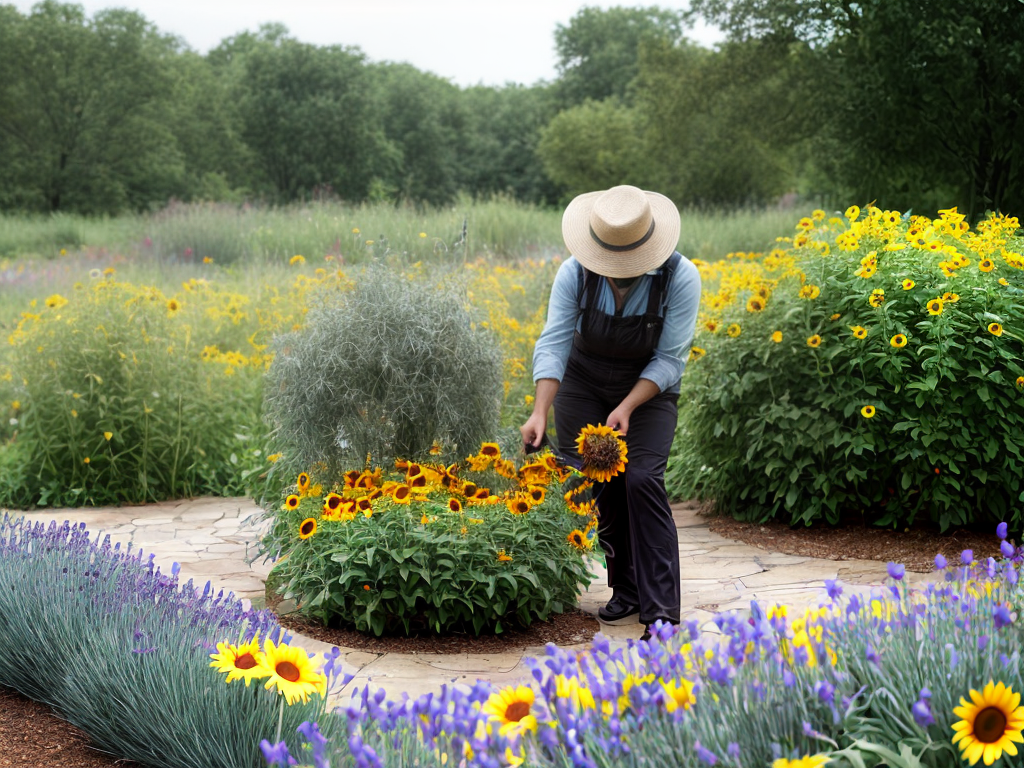
As we step into the realm of gardening, envision a sanctuary buzzing with life, where every bloom serves a purpose beyond mere aesthetics. Picture a garden teeming with vibrant colors and fluttering wings, a harmonious ecosystem at your fingertips. But how can we achieve this symbiotic haven, you may ask? Let’s explore the intricate dance of pollinators and plants, uncovering the secrets to nurturing a thriving pollinator-friendly garden that not only benefits nature but also rewards us with beauty and tranquility.
Importance of Pollinator-Friendly Gardens
Pollinator-friendly gardens play a crucial role in supporting biodiversity and ensuring the health of ecosystems. With pollinator decline and habitat loss becoming significant concerns, creating urban spaces that cater to these vital creatures is more important than ever. Urban gardening initiatives that focus on planting pollinator-friendly flowers and plants can have a substantial positive impact on the surrounding community. Not only do these gardens provide a safe haven for bees, butterflies, and other pollinators, but they also beautify the environment and create a sense of interconnectedness among residents.
The decline in pollinators directly affects our food supply and the overall health of ecosystems. By establishing pollinator-friendly gardens in urban areas, we can help mitigate this decline and promote biodiversity. These green spaces act as corridors for pollinators to move through urban landscapes, ensuring they have access to food sources and habitats. The community impact of these gardens extends beyond supporting pollinators; they also foster a sense of pride and environmental stewardship among residents, creating a shared space for all to enjoy.
Selecting Native Plants for Biodiversity
When choosing plants for a pollinator-friendly garden, opting for native species can significantly benefit biodiversity. Native plants are well-suited to the local environment, requiring less water and maintenance while providing essential habitats for wildlife. By incorporating a variety of native plants, we can promote biodiversity and help conserve important ecosystems.
Native Plant Benefits
Selecting native plants for your garden enhances biodiversity by providing essential habitats and food sources for local wildlife. Native plants play a crucial role in habitat restoration, as they have adapted to the local environment over time, supporting the intricate web of life in your area. By including native plants in your garden, you contribute to ecosystem services like pollination, soil health, and pest control, benefiting not only the plants themselves but also the entire ecosystem. These plants are well-suited to the climate and soil conditions of your region, requiring less maintenance and water once established. Embracing native plants in your garden is a powerful way to support biodiversity and create a thriving, sustainable ecosystem.
Biodiversity Conservation
Enhancing garden biodiversity through the strategic incorporation of native plants is pivotal for fostering a resilient and thriving ecosystem.
- Habitat Restoration: By selecting native plants, we contribute to the restoration of natural habitats for local wildlife.
- Community Involvement: Involving the community in planting native species fosters a sense of belonging and shared responsibility for environmental conservation.
- Urban Gardening: Native plants in urban gardens create green spaces that benefit both humans and wildlife by providing food and shelter.
- Green Spaces: Incorporating native plants into your garden helps expand green spaces in urban areas, promoting biodiversity and improving air quality.
Providing Water Sources for Pollinators
To support pollinators in your garden, it is essential to provide accessible water sources throughout the year. Implementing watering strategies such as installing a pond can attract various pollinators seeking water. Ponds not only serve as a water source but also create a habitat for aquatic wildlife, enhancing the overall biodiversity of your garden.
Consider incorporating drip irrigation systems to provide consistent and easily accessible water for pollinators. These systems deliver water directly to the plant’s roots, reducing water waste and ensuring that pollinators can easily access the water they need.
Additionally, strategically placing birdbaths in your garden can offer pollinators a safe and shallow water source. Be sure to regularly clean and refill the birdbaths to prevent the spread of diseases and maintain a fresh water supply for your pollinator visitors.
Avoiding Harmful Pesticides in Gardening
When it comes to creating a pollinator-friendly garden, avoiding harmful pesticides is crucial. I will provide you with essential tips for pesticide-free gardening and natural methods to control pests. Let’s ensure that our gardens are safe havens for pollinators by implementing these practices.
Pesticide-Free Gardening Tips
Implementing pesticide-free practices in gardening promotes a healthier ecosystem for pollinators and plants alike. When aiming for a pesticide-free garden, consider the following tips:
- Companion planting: Pairing certain plants together can naturally repel pests and attract beneficial insects.
- Focus on soil health: Healthy soil leads to stronger plants that are more resistant to pests and diseases.
- Regularly inspect your plants: Early detection of pest issues allows for targeted intervention methods.
- Use physical barriers: Employ row covers, netting, or hand-picking to manage pests without chemicals.
Natural Pest Control Methods
Exploring natural pest control methods in gardening enhances the sustainability of your garden ecosystem without relying on harmful pesticides. Two effective techniques are biological control and companion planting. Biological control involves introducing natural predators like ladybugs or praying mantises to keep pest populations in check. Companion planting is strategically placing mutually beneficial plants together to deter pests; for example, planting marigolds alongside tomatoes can repel nematodes.
| Natural Pest Control Methods | Description | Benefits |
|---|---|---|
| Biological Control | Introduce natural predators | Reduces pest population |
| Companion Planting | Planting mutually beneficial plants together | Deters pests effectively |
Embracing these natural pest control methods not only protects your garden but also fosters a harmonious environment for beneficial insects and plants to thrive.
Creating Nesting Habitats for Pollinators
To attract various pollinators to your garden, consider constructing simple nesting habitats using materials such as hollow stems, twigs, and soil. Creating these shelters can provide a safe space for beneficial insects to nest and thrive, ultimately aiding in pollination and maintaining a healthy ecosystem in your garden.
Tips for Creating Nesting Habitats:
- DIY Insect Hotels: Build insect hotels using bamboo, cardboard tubes, and natural fibers to attract solitary bees and other beneficial insects.
- Natural Materials: Use a variety of natural materials like straw, dried leaves, and pinecones to create cozy nesting spots for pollinators.
- Avoid Pesticides: Refrain from using pesticides near the nesting habitats to protect the pollinators from harmful chemicals.
- Provide Water: Place small water sources like shallow dishes or rocks filled with water near the nesting habitats for pollinators to stay hydrated.
Maintenance Tips for a Thriving Garden
For a thriving garden, regular maintenance is essential to ensure the health and vibrancy of your plants. Start by prioritizing soil health. Test your soil to determine its pH and nutrient levels. Amend it as needed with organic matter like compost to provide essential nutrients for your plants. Healthy soil is the foundation for a flourishing garden.
Seasonal pruning is another vital aspect of garden maintenance. Prune your plants at the appropriate times to promote growth and prevent disease. Remove dead or damaged branches to encourage new growth and improve air circulation within the plant canopy. This practice not only enhances the overall appearance of your garden but also contributes to the well-being of your plants.

